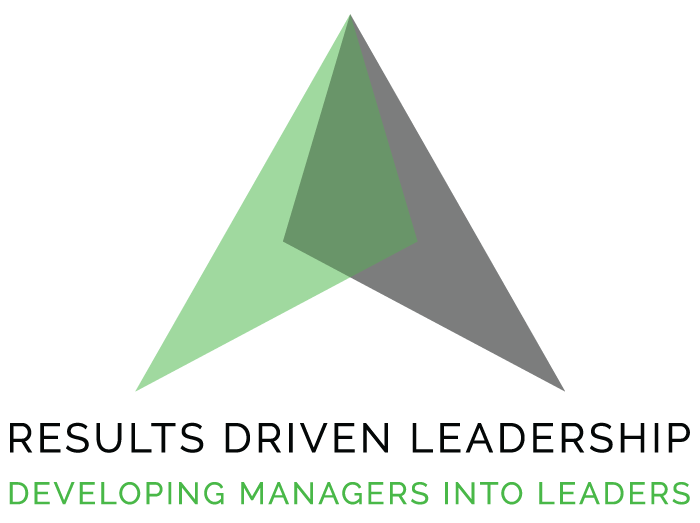TABLE OF CONTENTS
… and Breaking Free from, “That’s Not My Job” mentality.
The “It’s not my job” mentality often finds its roots in the organization’s management and leadership practices rather than being solely an employee issue. Leaders play a pivotal role in setting the tone and shaping the culture within an organization. When employees feel disconnected from their roles, unsure of expectations, or perceive that their contributions are not valued, it can lead to a reluctance to go beyond their job descriptions.
Effective leadership involves clear communication of roles and responsibilities, providing adequate resources, and fostering an environment where employees feel motivated and empowered to take ownership of their work.
It’s the responsibility of leaders to create a culture that encourages collaboration and recognizes individual and team efforts. By addressing these management and leadership aspects, organizations can actively work to eliminate the “It’s not my job” mentality and cultivate a workplace where employees are eager to contribute their best.
Teamwork is the backbone of any successful organization. When all elements within a greater team work together, mutual support and collaboration drive success toward a common mission. In most cases, your mission or goals. However, there’s a toxic attitude that can undermine this unity: “That’s not my job.” In this blog, we’ll explore the critical concept of employee ownership and dive into the root causes and solutions leaders must take to wipe it out permanently.
The Importance of Employee Ownership
Employee ownership refers to the mindset where individuals take personal responsibility for their roles within a team and an organization. When employees genuinely own their jobs, they go above and beyond their job descriptions, proactively contribute to the team’s success, and feel a deep sense of accountability for the organization’s goals. This kind of ownership is instrumental in fostering a culture of collaboration and achieving a shared mission.
Causes of the “That’s Not My Job” Attitude
The “That’s not my job” attitude can be a significant roadblock to teamwork and organizational success. Several factors contribute to this detrimental mindset:
Lack of Clarity: Employees may adopt this attitude when their job roles and responsibilities are not clearly defined. When there is ambiguity about who is responsible for what, employees are more likely to disengage or refuse tasks that fall outside their perceived scope.
Fear of Overload: Some employees fear that taking on additional tasks or responsibilities will lead to an unsustainable workload. This fear can cause them to reject requests for help, even if they have the capacity to assist.
Incentive Structure: In some organizations, the incentive structure may be misaligned with teamwork and collaboration. If employees are primarily rewarded for individual achievements or narrowly defined job tasks, they may be less inclined to help their colleagues.
Lack of Trust: A lack of trust among team members can breed the “That’s not my job” mentality. When employees don’t trust their colleagues to reciprocate help or acknowledge their contributions, they may become more self-protective.
Organizational Culture: An organization’s culture plays a significant role in shaping employee attitudes. A culture prioritizes teamwork and collaboration, and recognizing employees for going the extra mile is more likely to encourage employee ownership.

Understanding the Problem
The “That’s not my job” attitude often arises from a lack of clarity, fear of overloading, misaligned incentives, a deficit of trust, or an unsupportive organizational culture. It can manifest as employees hesitating to help colleagues, ignoring tasks outside their job descriptions, or withholding valuable input due to a perceived lack of responsibility.
Consequences: Good and Bad
This attitude has both favorable and adverse consequences. On the positive side, employees may avoid overextending themselves, ensuring they meet their primary responsibilities efficiently. However, the drawbacks are significant:
Missed Opportunities: When employees refuse to collaborate beyond their job roles, opportunities for innovation and problem-solving are missed.
Disengagement: An “It’s not my job” mindset can lead to disengagement, as employees may feel detached from the organization’s broader goals.
Weakened Team Dynamics: Teamwork and trust can erode when team members don’t support one another.
Stifled Growth: Organizations may struggle to adapt and grow in a rapidly changing business landscape without a collaborative culture.
Breaking Free from “That’s Not My Job”
Taking Ownership: Creating an ownership culture starts with recognizing the problem and its consequences. Acknowledge that the “That’s not my job” mentality can be detrimental to your organization’s success. It’s a shared responsibility to tackle this issue. Leaders here are some goals you must achieve.
Clarify Roles and Expectations: Define and communicate job roles clearly. Encourage employees to seek clarification when needed.
Align Incentives: Ensure recognition and rewards are linked to teamwork and collaboration. Recognize employees who support their colleagues above and beyond their job descriptions.
Foster Trust: Invest in trust-building initiatives, open communication, and team-building activities. Trust forms the foundation of an ownership culture.
Lead by Example: Leadership sets the tone. Leaders should actively participate in cross-functional collaboration and demonstrate a commitment to supporting their teams. You must be the best of the best in recognition as well. Catch them doing it right and tell them you see it
Facilitating Implementation
Creating an ownership culture requires a systematic approach
Training and Education: Provide training on teamwork, communication, and collaboration skills. Equip employees with the tools they need to embrace an ownership mentality.
Here are some examples of training sessions on teamwork that organizations can implement to foster a collaborative and effective team environment:
- Team Building Workshops: These sessions focus on building trust, improving communication, and strengthening relationships among team members. Activities such as team-building games, problem-solving exercises, and group challenges can be included to promote teamwork.
- Effective Communication Training: Effective communication is a cornerstone of successful teamwork. Training can cover active listening, non-verbal communication, and conflict resolution skills. Role-playing exercises and simulations can be used to practice these skills.
- Conflict Resolution Workshops: Conflict is inevitable in any team. Teaching employees how to address conflicts constructively and find mutually beneficial solutions is crucial. Role-playing scenarios and real-life case studies can be used to practice conflict resolution techniques.
- Cross-Functional Training: Encourage employees to understand and appreciate the roles and responsibilities of their colleagues in different departments. This training can enhance collaboration across different functions within the organization.
- Leadership and Followership Training: Team members should understand when to take a leadership role and when to support others’ leadership. Training can focus on developing leadership skills when necessary and being a proactive follower when appropriate.
- Goal Setting and Alignment: Ensure that everyone on the team understands the organization’s goals and how their individual and team goals align with the larger mission. This helps create a shared sense of purpose.
- Feedback and Performance Evaluation Training: Teach team members how to give and receive feedback constructively. This includes both formal performance evaluations and informal, ongoing feedback.
- Problem-Solving and Decision-Making Workshops: Equip employees with problem-solving techniques and decision-making frameworks that encourage collaborative decision-making within the team.
These training sessions should be tailored to the specific needs and goals of the organization and its teams. They can be delivered through workshops, seminars, online courses, or a combination of methods to ensure that employees acquire the necessary skills and knowledge to work effectively as a team.
Continuous Feedback: Establish a feedback loop where employees can express concerns, share ideas, and provide input. Act on their feedback to demonstrate commitment to improvement.
Continuous feedback is a vital element in fostering a culture of collaboration and improvement within any organization. Establishing a feedback loop gives employees a platform to express concerns, share innovative ideas, and provide valuable input. This open channel of communication not only empowers employees but also demonstrates the organization’s commitment to growth and development.
What makes continuous feedback truly impactful is the follow-through. When organizations actively act on the feedback received, it sends a clear message that the input of every team member is valued and can drive positive change. This commitment to improvement not only enhances employee engagement but also leads to more innovative solutions and a stronger, more resilient team. In essence, continuous feedback is a catalyst for positive transformation and a hallmark of a thriving, forward-thinking organization.
Listen and take action. Never not follow through or that craters trust and teamwork.

Recognition Programs
Develop programs that acknowledge and celebrate instances of employees taking ownership and going beyond their job descriptions.
Recognition programs play a pivotal role in nurturing an ownership culture within an organization. By developing programs that acknowledge and celebrate instances where employees take ownership and exceed their job descriptions, organizations reinforce the value of proactive engagement and teamwork.
These programs serve as a powerful motivator, boosting employee morale and job satisfaction. When employees feel their efforts are recognized and appreciated, they are more likely to continue embracing an ownership mindset, going the extra mile to contribute to the organization’s success. These initiatives not only recognize individual achievements but also promote a culture where taking ownership and collaborative problem-solving are celebrated as integral parts of the team’s success, creating a positive and rewarding work environment.
Recognition programs are essential for acknowledging and celebrating employees’ contributions, motivating them, and reinforcing a positive company culture.
Here are some examples of recognition programs, along with best practices and techniques:
- Employee of the Month/Quarter/Year:
- Best Practice: Use a nomination and selection process involving employees and managers to ensure fairness.
- Technique: Award a certificate, plaque, or trophy, along with a special parking space or a small monetary reward.
- Peer Recognition Programs:
- Best Practice: Encourage employees to recognize their colleagues’ achievements.
- Technique: Implement a system where employees can nominate and applaud their peers’ contributions, with rewards such as gift cards, extra time off, or public acknowledgment.
- Appreciation Emails or Notes:
- Best Practice: Encourage frequent, specific, and heartfelt expressions of gratitude.
- Technique: Provide a platform for employees to send appreciation emails or handwritten notes to their coworkers, and consider creating a “Wall of Thanks” where these messages are displayed.
- Employee Awards Ceremonies:
- Best Practice: Make recognition events memorable and inclusive.
- Technique: Hold annual or quarterly awards ceremonies where employees are recognized for various achievements, such as innovation, teamwork, or leadership.
- Performance Bonuses and Incentives:
- Best Practice: Tie rewards to specific, measurable goals and achievements.
- Technique: Offer financial incentives, such as bonuses, profit sharing, or stock options, for meeting or exceeding performance targets.
- Flexible Work Arrangements:
- Best Practice: Recognize work-life balance as a valuable contribution.
- Technique: Allow high-performing employees to have flexible schedules, telecommuting options, or additional paid time off.
- Team-Based Recognition:
- Best Practice: Encourage collaboration and teamwork.
- Technique: Recognize entire teams for achieving significant milestones or completing successful projects with team-based rewards, outings, or celebrations.
- Employee-Driven Initiatives:
- Best Practice: Empower employees to shape the recognition programs.
- Technique: Encourage employees to suggest and lead recognition initiatives, allowing them to take ownership of the process.
- Surprise and Delight Moments:
- Best Practice: Keep recognition spontaneous and unexpected.
- Technique: Surprise employees with impromptu rewards, like office treat deliveries, spontaneous celebrations, or shout-outs during meetings.
Remember that the effectiveness of recognition programs lies in their authenticity and alignment with the company’s values. Regularly evaluate and adapt your recognition initiatives to ensure they resonate with employees and contribute to a positive work environment.
Measure Progress
Regularly assess the organization’s culture and the impact of your initiatives. Adjust your strategies based on feedback and results. What Gets Measured, Gets Improved.
Measuring progress and continually evaluating the organization’s culture and the effectiveness of implemented initiatives is pivotal for ongoing improvement. Utilizing various methods, such as surveys, focus groups, and key performance indicators (KPIs), allows organizations to gain valuable insights into the impact of their recognition programs and culture-building efforts.
For instance, an organization may conduct customer service surveys to gauge satisfaction levels and identify areas for improvement. Best practices in this regard include setting clear benchmark metrics, tracking trends over time, and involving employees in the assessment process to gather diverse perspectives.
By regularly assessing and analyzing data, organizations can make informed decisions, refine their strategies, and ensure that recognition programs and culture-building initiatives remain aligned with their employees’ evolving needs and preferences. This approach fosters a culture of adaptability and responsiveness, ultimately leading to a more engaged and motivated workforce.

Wrapping it Up
In conclusion, fostering a culture of ownership, teamwork, and recognition within an organization is not only essential but also highly achievable with the right strategies and practices in place. By addressing the “That’s not my job” mentality through clarity, trust-building, and alignment of incentives, organizations can create an environment where employees proactively contribute beyond their job descriptions. Incorporating recognition programs, such as employee awards, appreciation initiatives, and professional development opportunities, acknowledges and celebrates employees’ efforts.
Furthermore, measuring progress and regularly assessing the organization’s culture and the impact of initiatives ensure that the organization remains adaptable and responsive to the evolving needs of its workforce. Together, these approaches result in a workplace culture that not only drives individual and collective success but also nurtures engaged, motivated, and empowered employees.





